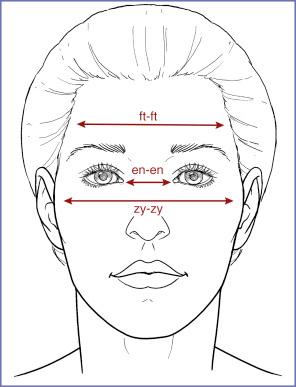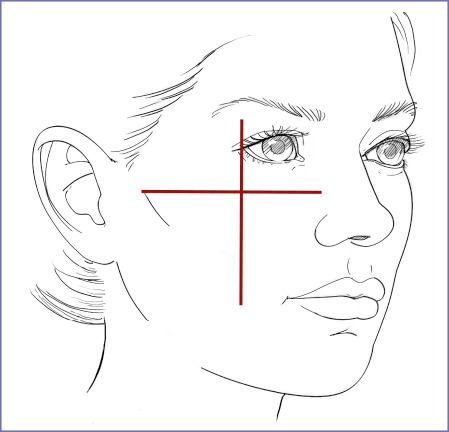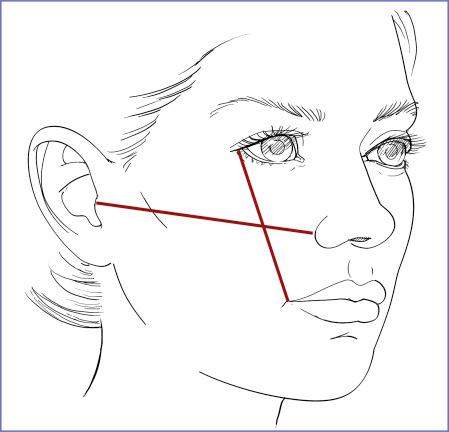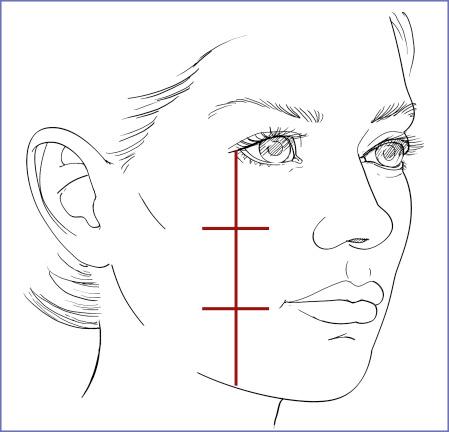Physical Address
304 North Cardinal St.
Dorchester Center, MA 02124
Prominent malar bones are considered attractive. Hence, the malar area is frequently augmented with implants. Although not documented in the literature, personal experience with primary and secondary malar implant surgery has shown that there is a significant incidence of patient dissatisfaction with this surgery. Patients presenting for secondary surgery have three main complaints: implant asymmetry; displeasing implant contours – too wide, too large, too low, or too prominent with time; and symptoms of infraorbital nerve compression. Concepts and techniques presented in this chapter hope to optimize results and avoid these problems.
A dome-like shape with an absence of easily defined landmarks that are projected to the surface of the skin precludes anthropometric or cephalometric analysis of the malar area. The resultant paucity of objective data describing the malar area has inevitably made implant augmentation of this area more subjective. Because it is difficult to define what is average or normal for the malar area, selection of implant shape, implant size, and implant position for malar augmentation can be problematic.
There are no anthropometric or cephalometric landmarks defining malar prominence.
The only anthropometric landmark for analysis of the malar area is zygion (zy), which measures the bizygomatic distance or width of the midface ( Fig. 9.1 ).

Several landmarks lie adjacent to or involve portions of the malar bone, but there are none defining an area of maximum malar prominence.
Several surgeons, working without quantitative data, have suggested techniques to identify the malar prominence as a guide to malar augmentation. Their techniques use fixed relations to various anatomic landmarks to determine an ideal position of malar prominence. The availability of three-dimensional computed tomography (CT) scans has allowed the senior author to correlate the underlying skeletal topography with the overlying soft tissue envelope. With this information, the senior author places the point of maximum projection just at, or slightly lateral to, the intersection of a vertical line placed through the lateral canthus and a horizontal line traversing the infraorbital foramen ( Fig. 9.2 ). This location is similar to that described by Hinderer and Wilkinson.

Hinderer, one of the first to advocate the use of alloplastic implants for aesthetic surgery, divided the malar area into quadrants formed by two intersecting lines. One is drawn from the ala to the tragus and the other from the oral commissure to the lateral canthus. He advocated placing the implant in the upper outer quadrant formed by these intersecting lines ( Fig. 9.3 ).

Wilkinson proposed a method for determining the point of maximum malar projection by dropping a line vertically to the mandible border, then dividing it into thirds. The malar prominence should lie just lateral to the point one-third down from the canthus ( Fig. 9.4 ).

Whitaker’s analysis of the malar midface considers three zones in the malar–midface complex: a medial paranasal area, a central malar area, and a lateral zygomatic arch area. It does not define an area of maximum malar prominence. The division of the midface into anatomic zones, also advocated, but divided differently by Terino, has been extremely helpful in visualizing and correcting not only malar but also other areas of midface deficiency.
As the most prominent and surgically accessible portion of the midface and until recently the only area of the midface for which implants were available, many patients receive malar implants when the entire midface or another midface area is deficient. This may exaggerate the facial imbalance. For example, malar augmentation, particularly when it extends far onto the zygomatic arch, may exaggerate the appearance of prominent eyes due to midface hypoplasia. These patients are better served with augmentation of the infraorbital rim alone or in combination with malar augmentation and other soft tissue manipulations (see Chapter 8 ).
Since full cheeks are associated with youth, malar augmentation is often performed to provide a youthful appearance. This may provide an aesthetic benefit if there is a relative malar hypoplasia or if the implants are of modest size and projection. This skeletal augmentation is not equivalent to a soft tissue augmentation or resuspension (see Chapter 1 ). Similarly, malar implants are often advocated as a means of obliterating lower eyelid wrinkles or secondary bags. Malar augmentation impacts poorly on these surface irregularities. More often they detract from periorbital aesthetics by contributing to lower lid malposition, particularly when placed through an eyelid approach.
In summary, the lack of anthropometric and cephalometric landmarks precludes the availability of normative data making analysis and augmentation of the malar area largely subjective. Malar deficiency is often part of a generalized midface deficiency for which malar augmentation alone may be inadequate or perhaps inappropriate. Clinical experience has shown that when malar projection is deemed inadequate, malar augmentation is most effective when it recreates the contours of a normal skeleton with prominent anterior projection. Malar skeletal augmentation is not a substitute for soft tissue augmentation or repositioning.
Become a Clinical Tree membership for Full access and enjoy Unlimited articles
If you are a member. Log in here